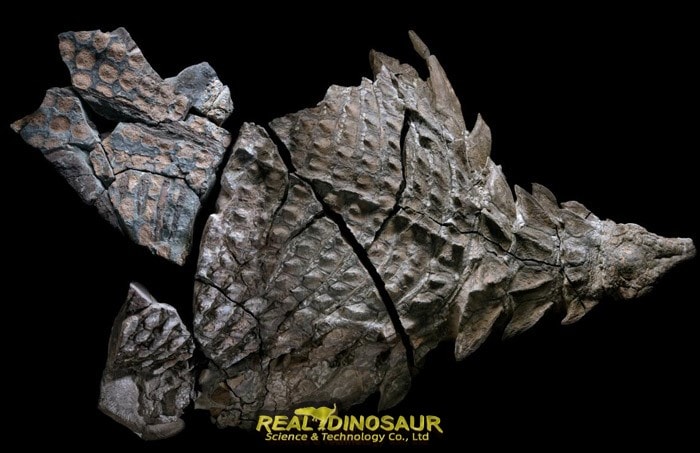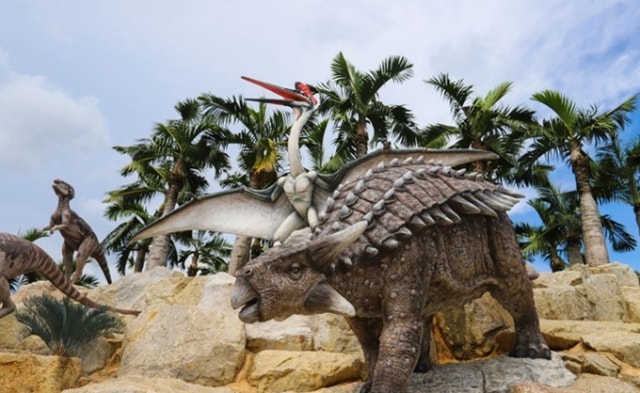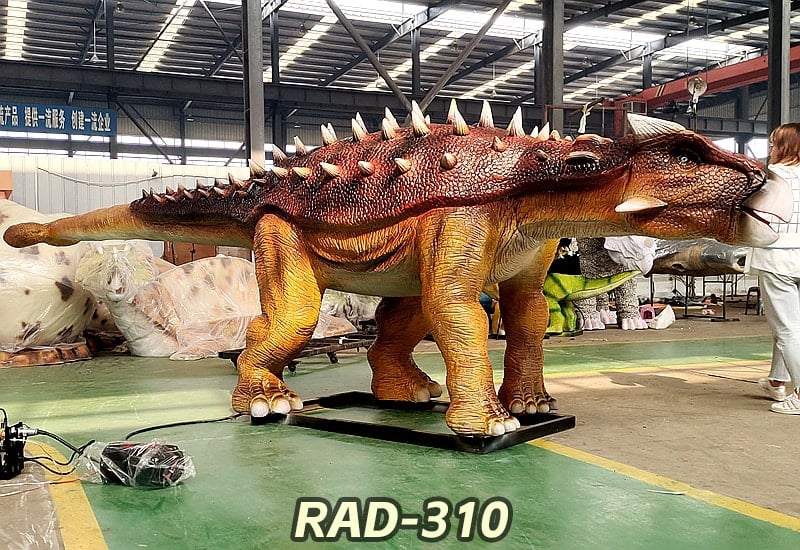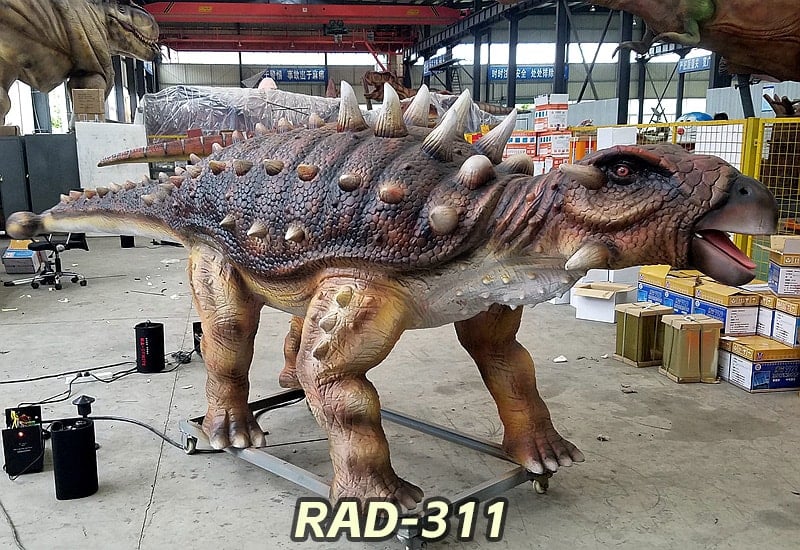Dinosaur Encyclopedia
Dinosaur with Full Body Armor – Ankylosaurus
>>>Understanding Ankylosaurus
Ankylosaurus is a dinosaur that existed during the Late Cretaceous period, specifically the Maastrichtian age, before the Cretaceous-Tertiary extinction event. Fossils of Ankylosaurus have been found in the Hell Creek Formation in Montana, USA, as well as in the Lance Formation in Wyoming and the Scollard Formation in Alberta, Canada. All these discoveries date back to the Late Cretaceous period.


>>>Dinosaur Fact Card
- Family: Ornithischia · Ankylosauridae · Ankylosaurinae
- Distribution: Bolivia in South America, Montana in the United States, and Mexico
- Time: Late Cretaceous period, approximately 68 to 65.5 million years ago
- Length: 7 meters
- Weight: 3.8 tons
- Distinctive Features: Bony plates resembling armor on the back, some with tail clubs
The most distinctive feature of Ankylosaurus is its armor, consisting of solid nodules and plates embedded in its skin. Similar armor can also be found in crocodiles, armadillos, and some lizards. The bones are covered with tough keratin. These internal bony plates (Osteoderms) are arranged by size, from wide and flat plates on the neck, back, and hips to small, round nodules. The plates on its neck, back, and hips are neatly arranged in transverse rows, while smaller nodules protect the gaps between the large plates. Smaller plates are present on the limbs and tail. Compared to the more ancient nodosaurids like Edmontonia, Ankylosaurus’s plates are smoother in texture and lack the ridges seen in contemporaneous nodosaurids. A row of flat, triangular spikes extends along each side of the tail. Hard, round scales protect the top of the skull, while four large horns project backward.


>>>Morphological Features
Ankylosaurus means “armored” or “stiff lizard” and belongs to a category of dinosaurs covered in “armor” all over their bodies. They have a massive and cumbersome body, with longer hind limbs than forelimbs, making them unsuitable for running. They can only crawl slowly on the ground, resembling a tank moving forward. Due to this appearance, some people refer to them as “tank dinosaurs.”
>>>Sturdy Equipment
In the Late Cretaceous, the stegosaurs disappeared, and the ankylosaurs took their place. As the last surviving group of dinosaurs before extinction, Ankylosaurus naturally possessed strong self-defense capabilities to adapt to the Earth’s environment, preventing themselves from being eliminated. From a defensive standpoint, Ankylosaurus developed to its pinnacle, covering its entire body with thick armor, including solid nodules and plates embedded in the skin. Bony plates cover the neck, hips, and sides of the body, and some even have dagger-like sharp spikes, providing a tight defense against most predators and explaining their resilient survival.
>>>Tail
Ankylosaurus has a tail resembling a golf club, composed of several bony plates, which are robust and powerful. The tail, consisting of additional plates besides those on its body, serves as another potent defensive weapon. Through the tendons connecting to the tail vertebrae, Ankylosaurus transfers force to the tail club, delivering a powerful blow to potential threats.
This is the animatronic model of an Ankylosaurus that we created.



REALDINOSAUR is a professional manufacturer specializing in animatronic dinosaurs. The animatronic ankylosaurus model is one of our best-selling products. If you are interested, feel free to contact us for more animatronic dinosaur product images or a quotation.